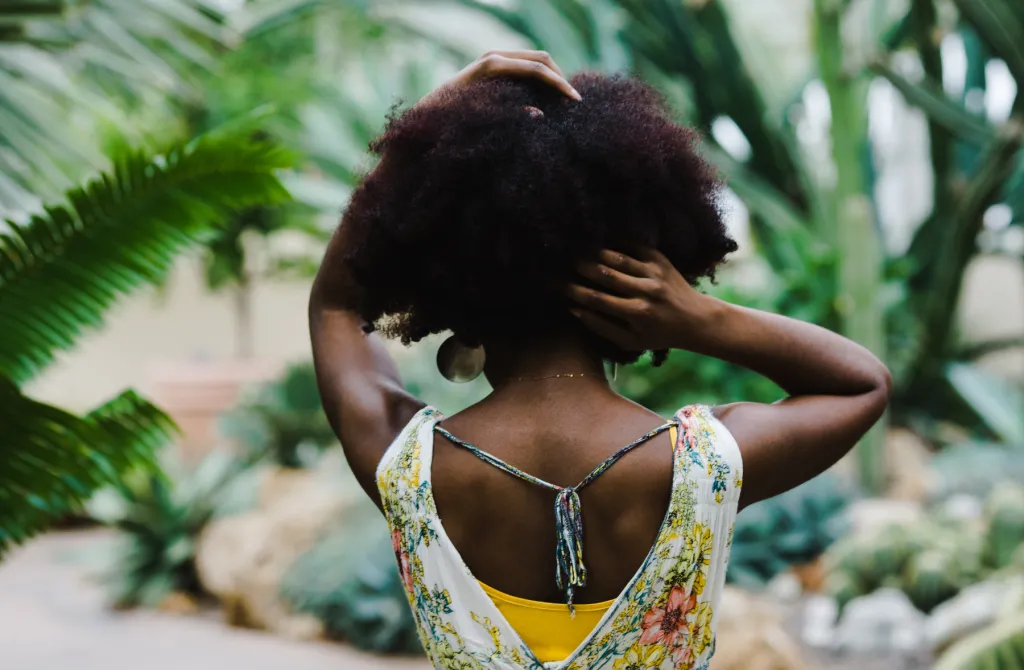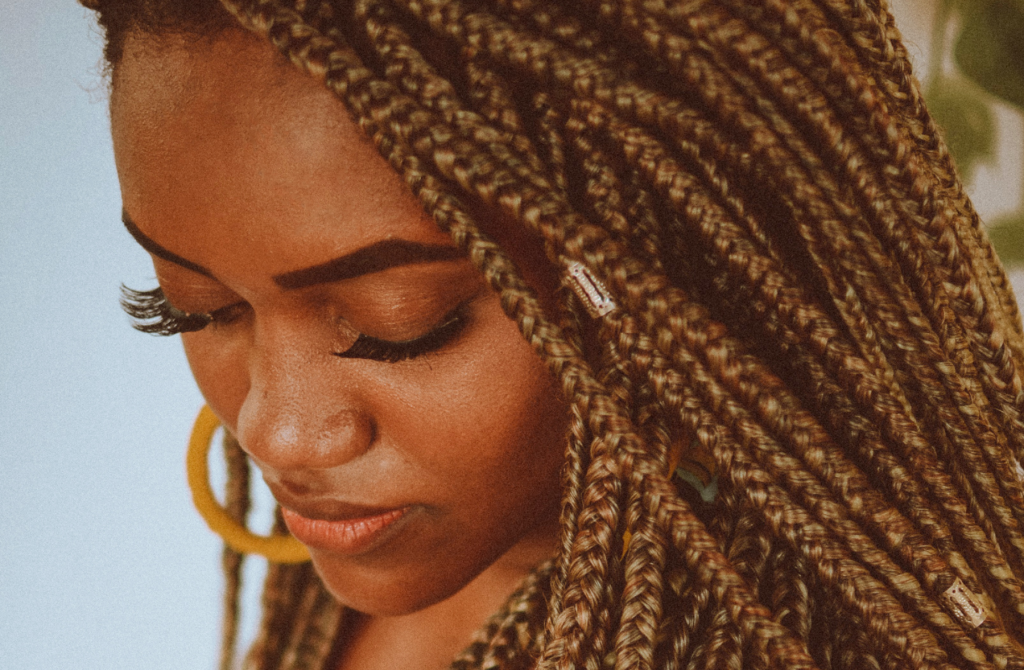We’ve all been there - struggling with stubborn hair knots that refuse to budge. Whether your hair is curly, wavy, or straight, tangles can be frustrating and time-consuming.
They lead to breakage, make styling difficult, and can even cause discomfort when brushing. The good news is that with the right techniques, hair knots can be prevented and removed without unnecessary daamage.
This guide explores the reasons behind knots, ways to prevent tangles, and the most effective detangling techniques to keep your hair in the best possible condition.
Why do hair knots form?
Hair knots happen when strands wrap around each other, creating tangles that can be difficult to separate.
Some hair types are more prone to knots due to their structure, while external factors also contribute to increased tangling.
Common causes of hair knots
- Hair texture: Curls and coils naturally intertwine, making them more susceptible to knots.
- Lack of moisture: Dry hair raises cuticles, increasing friction and making strands cling together.
- Product buildup: Excessive use of styling products can create product build-up that causes strands to stick together.
- Environmental factors: Wind, humidity, and fabric friction from scarves, hats, or bedding can contribute to tangles.
- Poor haircare practices: Overwashing, aggressive brushing, or sleeping without hair protection can make knots worse.
How hair porosity affects knots (and what you can do about to eliminate it)
Ever wonder why some people’s hair seems to knot up instantly while others barely deal with tangles? A big part of the answer lies in hair porosity – which is basically how well your hair absorbs and holds onto moisture. Understanding your hair’s porosity can help you tweak your routine to keep knots under control.
- Low porosity hair – If your hair repels water rather than soaking it up, you likely have low porosity hair. The cuticles lie flat, making moisture absorption slow. The downside? Product build-up and friction can lead to tangles. To keep your hair manageable:
- Use lightweight, water-based leave-ins for better absorption.
- Regularly deep condition your hair to help moisture penetrate.
- Medium porosity hair – This is the sweet spot where moisture retention and absorption are balanced, meaning it’s less prone to knots. If this sounds like your hair, you're in luck! Just be mindful of:
- Avoiding heavy products that can weigh it down.
- Maintaining a balanced routine with both moisture and protein treatments.
- High porosity hair – If your hair drinks up moisture fast but loses it just as quickly, you’re dealing with high porosity hair. The raised cuticles make strands more prone to dryness, which often leads to knots. The best way to combat this?
- Deep condition often to replenish lost moisture.
- Lock in hydration with oils to smooth the cuticle and prevent tangles.
By tailoring your hair routine to match your porosity type, you’ll not only reduce tangles but also keep your curls hydrated, healthy, and easier to maintain!
How to get rid of hair knots with deep conditioning
You can help get rid of hair knots with deep conditioning. Start by applying a rich, moisture-boosting treatment to damp, sectioned hair.
Choose a deep conditioner with ingredients like aloe vera, coconut milk, or slippery elm, which provide excellent slip, making it easier to loosen tangles.
Regular deep conditioning helps keep hair less prone to tangling, making future detangling sessions much easier.
If you’re interested in learning more about deep conditioning and how it can transform your curls, check out this complete guide for expert tips, DIY treatments, and step-by-step techniques.
How to get rid of hair knots with feathering
Feathering is a gentle technique that helps untangle knots without excessive pulling or breakage. It works by carefully loosening the knot in layers rather than forcefully yanking at the strands.
Step-by-step guide to feathering out hair knots
- Apply moisture: Use a leave-in conditioner, detangling spray, or natural oil (such as coconut or argan) to soften the knot.
- Use fingers first: Gently pull apart the outer layers of the knot with your fingertips, separating strands instead of pulling downward.
- Introduce a wide-tooth comb: Once the knot starts loosening, use a wide-tooth comb to carefully work through it, beginning from the ends and moving upwards.
- Work in sections: If dealing with multiple knots, dividing hair into smaller sections makes detangling easier.
- Take your time: Rushing can cause unnecessary breakage. Patience is key when detangling stubborn knots.
Feathering takes a bit of time, but it is one of the safest ways to deal with knots while preserving hair health.
How to prevent hair knots
Prevention is always better than cure when it comes to tangles. A few small changes in your routine can significantly reduce knots from happening.
Maintain moisture levels
- Use a sulphate-free shampoo to cleanse without stripping natural oils.
- Apply a hydrating conditioner after each wash, focusing on the ends.
- Use a leave-in conditioner to ensure your hair is easy to detangle.
- Seal in moisture with lightweight hair oils like argan or jojoba.
Choose the right detangling tools
- Wide-tooth comb: Minimises breakage while gently removing knots.
- Detangling brush: Designed to glide through your hair with less resistance.
- Fingers: Sometimes the most effective tool, allowing knots to be worked on gently.
Hairstyles that help prevent hair knots
Protective styles like braids, twists, and buns
Keeping hair secured in protective styles reduces movement and friction, preventing knots from forming.- Braids: Keeping box braids for 4-6 weeks will keep your strands contained and tangle-free.
- Twists: A softer alternative to braids, providing structure while allowing hair to breathe.
- Buns: A loose bun at the nape of the neck keeps hair gathered while avoiding strain.
Best styles for sleeping to avoid tangling
Night-time friction is a common cause of knots. Opt for styles that keep hair controlled while sleeping.- A loose braid: Helps keep strands in place while minimising movement.
- Pineapple method: A high ponytail that protects curls and reduces knots.
- Satin or silk scarf wrapping: Prevents friction against the pillow.
- Twists or bantu knots: Preserve curl patterns while preventing tangling.
Frequently asked questions about hair knots
Why does my hair knot so easily?
Your hair may knot easily due to its texture, lack of moisture, or environmental factors. If you have curly or high-porosity hair, tangles are more common. Keeping hair hydrated and using protective styles can help prevent excessive knots.
Should I detangle my hair when it’s wet or dry?
It’s usually best to detangle damp hair, as it’s more flexible and easier to work through with a conditioner or detangling spray. But, if your hair is particularly fragile, using your fingers on dry hair before washing can help minimise breakage.
What’s the best brush for preventing knots?
Can trimming my hair help reduce knots?
Yes! Split ends make knots worse, as they cause strands to tangle more easily. Regular trims every 6-8 weeks keep your hair healthy and less prone to tangling.
What are the best hairstyles to prevent knots?
Protective styles like braids, twists, and loose buns help keep hair secure and reduce tangles. Avoid tight styles that pull on the roots and cause stress on the strands.
Does sleeping on a silk pillowcase really help?
Yes! Silk and satin pillowcases reduce friction, preventing hair from rubbing against rough fabrics that cause knots. Wrapping your hair in a satin scarf or bonnet is another great way to keep it tangle-free while you sleep.
What’s the best way to remove a stubborn knot?
Apply a generous amount of conditioner or detangling spray, then gently separate the knot using your fingers. Work through the knot slowly with a wide-tooth comb, starting from the ends and moving upward.
Final thoughts
Hair knots don’t have to be an everyday struggle.
By adopting a proper haircare routine, using gentle detangling techniques, and choosing protective hairstyles, you can keep your hair free of tangles. Taking the time to maintain moisture levels and using the right tools will make a noticeable difference.
With these simple changes, you can spend less time battling knots and more time enjoying healthy, tangle-free hair.




